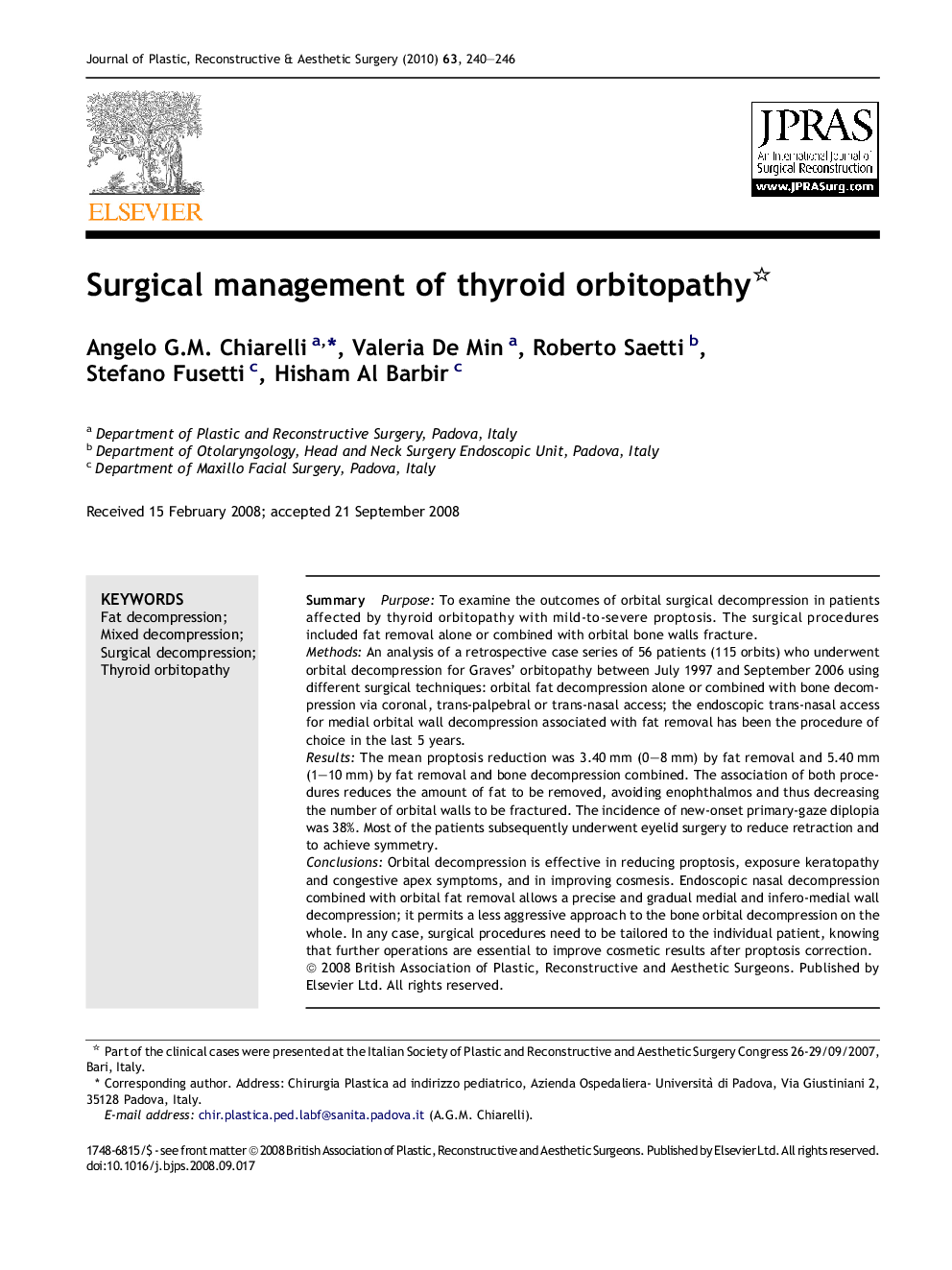| Article ID | Journal | Published Year | Pages | File Type |
|---|---|---|---|---|
| 4120164 | Journal of Plastic, Reconstructive & Aesthetic Surgery | 2010 | 7 Pages |
SummaryPurposeTo examine the outcomes of orbital surgical decompression in patients affected by thyroid orbitopathy with mild-to-severe proptosis. The surgical procedures included fat removal alone or combined with orbital bone walls fracture.MethodsAn analysis of a retrospective case series of 56 patients (115 orbits) who underwent orbital decompression for Graves' orbitopathy between July 1997 and September 2006 using different surgical techniques: orbital fat decompression alone or combined with bone decompression via coronal, trans-palpebral or trans-nasal access; the endoscopic trans-nasal access for medial orbital wall decompression associated with fat removal has been the procedure of choice in the last 5 years.ResultsThe mean proptosis reduction was 3.40 mm (0–8 mm) by fat removal and 5.40 mm (1–10 mm) by fat removal and bone decompression combined. The association of both procedures reduces the amount of fat to be removed, avoiding enophthalmos and thus decreasing the number of orbital walls to be fractured. The incidence of new-onset primary-gaze diplopia was 38%. Most of the patients subsequently underwent eyelid surgery to reduce retraction and to achieve symmetry.ConclusionsOrbital decompression is effective in reducing proptosis, exposure keratopathy and congestive apex symptoms, and in improving cosmesis. Endoscopic nasal decompression combined with orbital fat removal allows a precise and gradual medial and infero-medial wall decompression; it permits a less aggressive approach to the bone orbital decompression on the whole. In any case, surgical procedures need to be tailored to the individual patient, knowing that further operations are essential to improve cosmetic results after proptosis correction.
